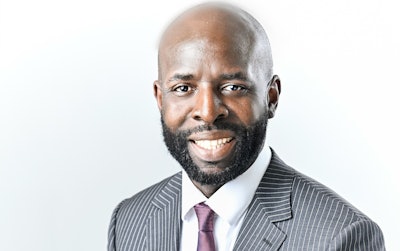Why do we continue to focus on the failures of Black students rather than target their successes? How is this continuous dialogue different from the consistent negative portrayal of Black people in the news? Not only are the failures of Black students discussed during meetings, workshops, and conferences, but they are also highlighted throughout academic literature. For instance, the majority of scholarly research which considers Black students in higher education, especially Black males, uses a failure-focused lens to discuss retention literature. As a result, a gap exists in the literature regarding what we know about the Black students who achieve academic success throughout their higher education journeys. Dr. Gerald Jones
Dr. Gerald Jones
Since the onset of the COVID-19 pandemic, there has been an expectation to see more literature produced which discusses equity gaps associated with student success outcomes, the retention of minoritized populations, and the impact from the pandemic on these outcomes. How do we change the focus of the literature from failures to successes? More importantly, how do we transform our words into actions to produce outcomes that actually address these equity gaps?
Over the past year, many new efforts have been exerted to help close equity gaps in the literature. Discussions regarding equity have never been more popular within the field of higher education than they are today. However, evidence-based practices, which should include “heart changes,” are required to address the issues within the academy related to these alarming retention gaps. These gaps have exposed America’s higher education system which, too, reflects the larger society of norms, customs, and traditions. This reality has built barriers for many students in higher education, especially Black students.
In 1969, Weldon Irvine pinned the song made famous by Nina Simone and Aretha Franklin called, “To be young, gifted, and Black.” She wrote in the lyrics, “How to be young, gifted and black, oh how I long to know the truth?” The lyrics in this song illustrate the essence of my issue in challenging higher education to highlight the successes of Black students who achieve student success outcomes. How do we expose Black student excellence on more platforms and more often within the academy? Ultimately, how do we conceptualize their voices to motivate others to achieve? As we consider these questions, below are three key strategies with which to lead.
Reframe the Narrative
To better highlight the academic success of high achieving Black students, it is important to disaggregate the data within racial demographics. When we generalize students based on non-disaggregate data, we assume things that may not be true. Consequently, based on these potentially false assumptions, the narrative is framed or headlined that all Black students are not retained. By disaggregating data, we learn about other factors that contribute to retention failures; thus, eliminating the generalization. These factors may include socioeconomic status or other secondary dimensions of human diversity. Reframing the narrative about Black students is critical to onboarding and retaining them.
Reform Teaching and Learning with Equity-Minded Practices
While completing my dissertation about Black males in programs for high achievers at a community college, I sought out students in honors programs to recruit my population for this qualitative study. I was surprised by how few Black males were enrolled in these programs. Some schools had zero Black males, while others had as few as one or two. In her song lyrics, Nina Simone shared, “In the whole world you know, there’s a million boys and girls, who are young, gifted and black.” If this is true, they definitely were not enrolled in the honors programs I pursued, at the community college. How do we recruit more Black students into honors programs? Moreover, how do we transform the classroom experience to keep our Black students engaged as active learners in high impact programs, using equity-minded pedagogies?
As I reflect upon these questions, a book titled Cool Pose, written by Drs. Richard Majors and Janet Billson, comes to mind. These authors set the stage to explore equity-minded practices through teaching and learning, thus raising the consciousness surrounding the issues Black males experience in the classroom. By shedding light on how Black males ritualize masculinity, the authors questioned whether a pedagogical transformation was necessary to make a class environment “cool”. How could we reform the classroom experience, without minimizing the quality of teaching and learning to retain, highlight, and graduate more Black students? More importantly, for the purpose of this discussion, how do we attract more Black high achievers into high impact programs that lead to student success?
Learn From and With High Achievers
We still know very little about high achieving Black college students. What contributes to their success? When we find these individuals, how do we incorporate their stories into high impact strategies? How do we utilize their testimonies regarding triumph over defeat to recruit and retain? By considering these critical questions, we can learn the students’ perspectives regarding their academic achievement and use that information to help our institutions do what we have not done, close equity gaps. More importantly, we involve students as collaborators in teaching and learning.
Overall, how we onboard, teach, learn from, and engage students outside of the classroom could have major impacts on their success. Now is the time to consider high achieving Black students in the challenge to accomplish success outcomes for Black students. We need to eliminate poorly managed boutique programs, which result in failures, given they do not contribute to closing equity gaps. Instead, let those who triumph over the barriers of “lack” join in as partners to ensure more Black students finish college.
Dr. Gerald Jones is the associate vice president of student affairs for Tallahassee Community College.















